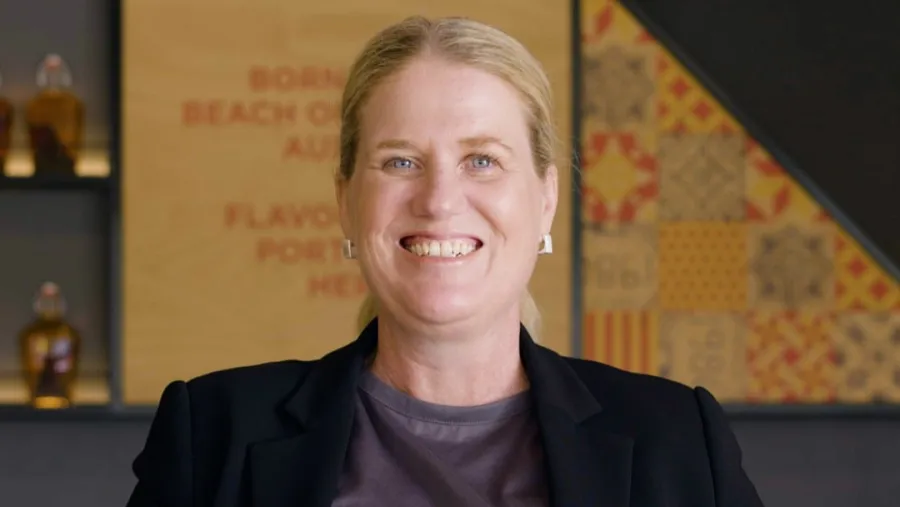
What fueled Oporto’s 200 restaurant growth?
The brand perfectly balanced its portfolio to capitalise on changing consumer preferences.
Oporto’s secret in reaching a 200 restaurant milestone is no secret: it’s their unrelenting obsession with being customer-centric.
For Samantha Bragg, CEO of Oporto, this means being more accessible to more Australians by keeping what she calls a balanced portfolio of restaurants.
Oporto first opened its doors in 1986. It is known for its Portuguese-style charcoal grilled chicken which is the star of the brand’s menu. From there, the menu has since expanded to consist of a variety of burgers, wraps, bowls, snacks, and desserts.
MORE LIKE THIS: Why shaping women leaders of tomorrow should come from the women of today
Oporto’s 200-strong restaurant unit is divided into three main formats: foodcourts, shop fronts, and drive-thrus. Each of these takes up about a third of Oporto’s restaurants. This, according to Samantha, is intentional so Oporto can creatively place stores where they know there will be high appeal with customers.
“We do particularly well in food courts, and our shop fronts are a strong destination like at our beachside stores at Bondi, Manly and Cronulla. Recently, we have opened and franchised a signficant number of drive-thru formats which allowed us to expand the brand towards high suburban and regional areas,” Samantha said.
Over the past year, drive-thrus has been the trending format amongst QSRs in Australia. Restaurant brands like Grill’d and Guzman y Gomez seemed to have centred their growth plans with this format in mind.
This is the same for Oporto. Samantha said that, currently the brand is opening more drive-thrus than other formats. And what’s driving this is the continued increased demand for the convenience that drive-thrus offer.
“Many of our customers have busy schedules and want the convenience of a drive-thru format where they can grab some flame grilled chicken or a Bondi Burger from Oporto on their way home from work or after they have been out. They want to take it home and consume it there and drive-thrus have become a huge part of making our brand more accessible,” Samantha explained.
Cost pressures remain
The last 12 months saw Oporto open 20 restaurants and their biggest challenge was the increasing cost pressures.
Samantha said their team had to be creative to ensure that the brand has a proposition that allows new people to become franchisees and expand their current cohort of franchisees.
“We were able to be creative, think a bit differently, and focus on the things that mattered in our store build. This allowed us to manage the cost of opening a new restaurant and we continue to see new and existing franchisees enter or expand in the brand”. Samantha said.
Cost pressures have also affected consumer spending. Consumer spending is recovering however at a snail's pace, with the Australian Bureau of Statistics recording an uptick of 0.5% in month-on-month spending in cafes, restaurants and takeaway food services in February linked to major events like Taylor Swift concerts and sporting events in January.
ALSO READ: How Gami Chicken found growth in adapting to what customers want
Because of this, there has been a shift in consumer behaviour. According to Samantha, this shift means that as a brand, you need only need to think about price, you also need to think about value.
“In Oporto our customers are looking for generosity. They are looking for things that meet their requirements in terms of value such as the quality of the product, the instore and digital experience, and ensuring that the food fills them up both in taste and quantity. Oporto has always represented a generous spirit,” Samantha explained.
Meanwhile, on the supply chain side, Oporto has a number of long term supply partners – some have been with the brand since it started.
Samantha said that this partnership approach and being a part of the scale of the Craveable Brands network, they have been able to balance and manage costs, price, and customer value.
Competition and the future
Last year, after buying Pizza Hut Australia, American franchise operator Flynn Restaurant Group announced that it would open Wendy’s in Australia. Most recently, Popeyes entered the New Zealand market, hinting that Australia is in its sights as well.
With new entrants in the market, how does Oporto aim to stay competitive?
“By doing what we’ve always done. Continue to challenge the category, and leverage our strength, particularly when it comes to flavour and our customer experience. I think you can get distracted by what everybody else is doing but we are clear on what our strategy is and where to win,” Samantha said.
The focus for Oporto currently is to be remain customer-centric, meaning a more personalised experience. This means the brand plans to invest in digital systems to support this focus.
“The focus is leveraging our e-commerce and digital channels and ensuring that they are integrated into our overall customer experience. Combined with continuing to accelerate our new store opens and build our daypart performance, the future for Oporto is bright and we are excited to be continuing to drive same store growth year on year”, Samantha said.























